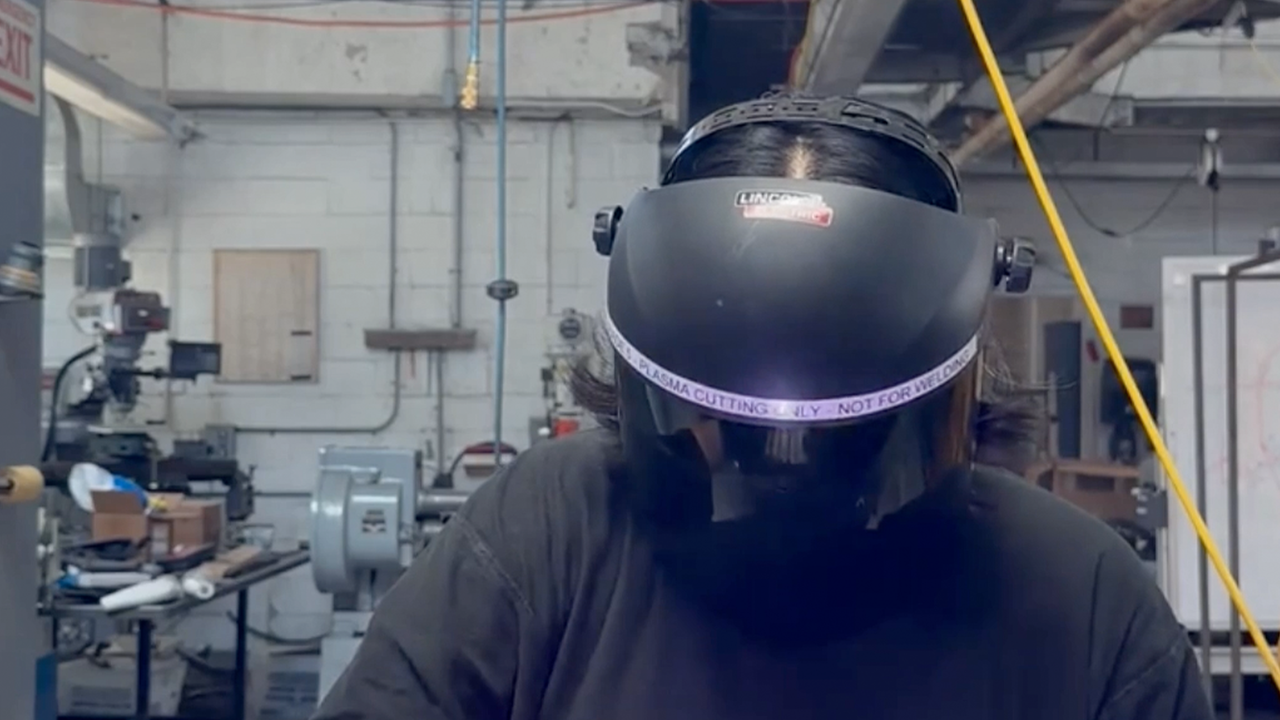How Artist Dora Budor Transforms Noise Pollution Into Sculpture
On the occasion of her first institutional solo show in Europe, Budor talks to frieze about soundscapes and science-fiction
On the occasion of her first institutional solo show in Europe, Budor talks to frieze about soundscapes and science-fiction

Carina BukutsYour current exhibition ‘I am Gong’ at the Kunsthalle Basel brings together two sites: the Kunsthalle itself and a concert hall across the street that is being renovated. How does a building designed for the experience of music relate to one built for the viewing of art?
Dora Budor Well, the most concrete connection is that the two buildings, Musiksaal and Kunsthalle, share the same architect. I sought a parasitical endeavour in relation to the occurring update, latching one building to the other’s processes, becoming galvanized by its co- and by-products: residues, noise, labour, debris and building remains. The work Tuning (Well, It’s a Vertebrate...) (2019) is a resonating umbilical cord installed for the duration of the exhibition. It transmits the impulses from one site to the other, transforming frequencies into sculptural material. The neoclassical building designed for listening now produces noise: an unruly composition. And through the work, one state of disorder infects a neighbouring institution designed to display visual art, in which otherwise hidden aspects become animated and visible. The effects of life inside of the Musiksaal building, which remain in progress, modulate the way that the exhibition builds up, intensifies and evolves.

CB Due to the ongoing reconstruction of the concert hall, visitors cannot see into the building and can only perceive it through its sonic effects. How does this non-visibility affect your show?
DB Except for the sight of the draped façade under construction, the Musiksaal will remain inaccessible till its reopening in September 2020. This creates a delay built into the process of the exhibition extending to a future event, but also foregrounding the process over an end goal. As it remains unseen, the concert hall also becomes a fiction of sorts.
The Sound Sweep (2019) is installed in the Kunsthalle’s cavities, which are spaces and gutted hollows behind, beneath and above surface walls, floors, and ceilings that resulted from the museum’s 2004 modernization. The work consists of a modulating soundscape that diverges and re-emerges from the spaces as directed by impulses from Tuning… (2019). It acts as invasive species on the space, or what Pierre Schaeffer and Jérome Peignot term the acousmatique; whereby sounds that are experienced separately from their causes produce a new paradigm of dislocation.

CB The soundscape also refers to J.G. Ballard’s 1960 namesake short story about the effects of sound pollution.
DB Yes, the story projects a future where sound pollution has become so prominent that the sound residues accumulate inside of private and public spaces, producing a whole new industry to eliminate it. Low levels of sound are left in solid surfaces and slowly trickle out of them over time, giving the inhabitants emotional flashbacks, disease and trauma. There is another, even more prescient sense of the world becoming an objet sonore – the emergence of an increasingly synthetic acoustic realm also marks the most sophisticated form of social control.
CB Whereas you have given up control and let most works evolve during the duration of the show.
DB Depending on the amount of time the viewer wants to spend here, they will see and hear certain things, or they might not. For The Year Without a Summer (Klug’s Field) (2019), when nudged by the activities of the site, the ash-dispersing mechanism will produce a light scattering of cinema ash over and around the pieces. Over the course of the exhibition it will accumulate, resulting in the months’ worth of sound formed into piles, constructing a new landscape in the exhibition space.

CB What about the furniture you used for The Year Without a Summer?
DB The seating is part of a new terrain as cinematic ash falls, ‘undoing’ the furniture items, reducing their functionality but also re-enacting the memory of the way they were conceived. In 1973, when the current was moving strongly towards utopian and radical approaches as antidote to modernism, designers, artists and architects imagined different types of inhabiting space, which would not only blur leisure and work, but allow for a different kind of movement and freedom. Ubald Klug was invited by De Sede to produce a piece of furniture. He designed the Terrazza DS-1025 by pouring a pile of sand onto the factory table, asking for this shape to be made of layers of leather, creating an endlessly variable set of modules. This installation features all unrestored originals from 1973, which have exhausted their life cycle, showing the signs of wear and tear, and their passage from one generation to another.
‘I am Gong’ runs at Kunsthalle Basel until 11 August 2019. Dora Budor will be among the artists included in the 16th Istanbul Biennial ‘The Seventh Continent’ curated by Nicolas Bourriaud, from 14 September to 10 November 2019.
Main image: Dora Budor, The Preserving Machine (detail) , 2018-19, installation view, Kunthalle Basel, 2019. Courtesy: the artist and Kunsthalle Basel; photograph: Philipp Hänger






















